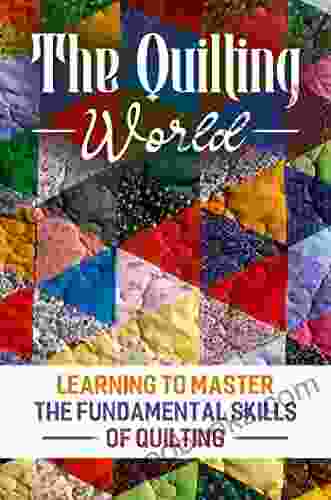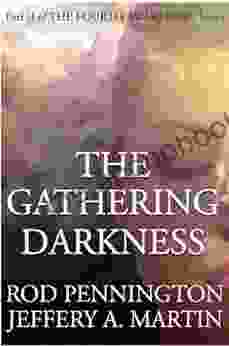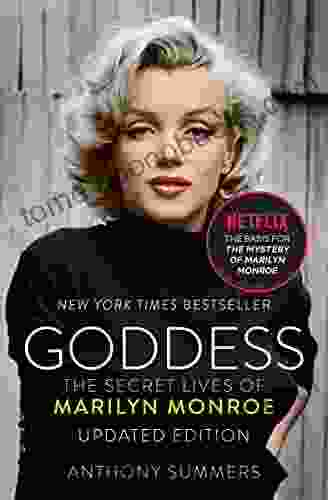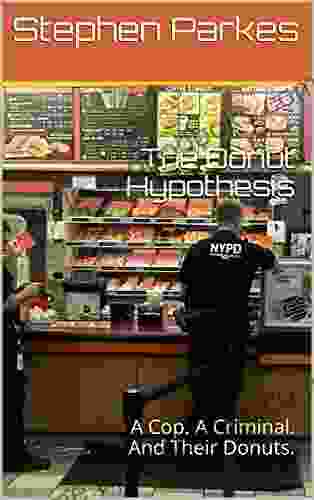Learning To Master The Fundamental Skills Of Quilting

Quilting is a beautiful and rewarding craft that can be enjoyed by people of all ages. Whether you're a beginner or an experienced quilter, there's always something new to learn. This comprehensive guide will teach you the fundamental skills of quilting, from choosing fabrics to binding your quilt. With clear instructions and helpful illustrations, you'll be able to create beautiful quilts that will be treasured for years to come.
4.1 out of 5
| Language | : | English |
| File size | : | 1277 KB |
| Text-to-Speech | : | Enabled |
| Screen Reader | : | Supported |
| Enhanced typesetting | : | Enabled |
| Print length | : | 39 pages |
| Lending | : | Enabled |
Choosing Fabrics
The first step in quilting is choosing the fabrics you'll use. There are a few things to consider when making your selection, including the type of quilt you're making, the colors you want to use, and the texture of the fabrics. For example, if you're making a quilt for a baby, you'll want to choose soft, gentle fabrics. If you're making a quilt for a bed, you'll want to choose fabrics that are more durable. Once you've considered these factors, you can start shopping for fabrics.
There are many different types of fabrics available for quilting, including cotton, flannel, linen, and silk. Cotton is the most popular choice for quilting because it's durable, easy to work with, and comes in a wide variety of colors and patterns. Flannel is a soft, warm fabric that's perfect for baby quilts and winter quilts. Linen is a strong, durable fabric that's often used in heirloom quilts. Silk is a luxurious fabric that's perfect for special occasion quilts.
Once you've chosen your fabrics, you need to decide how you want to arrange them. There are many different quilt patterns available, so you can choose one that suits your taste and skill level. If you're a beginner, you may want to start with a simple pattern, such as a nine-patch or a log cabin quilt. Once you've mastered the basics, you can move on to more complex patterns.
Cutting Fabrics
Once you've chosen your fabrics and arranged them in a pattern, you need to cut them into the correct size. This is a critical step, as the accuracy of your cutting will determine the overall look of your quilt. There are a few different ways to cut fabrics for quilting, including using a rotary cutter, a scissors, or a fabric cutting machine.
If you're using a rotary cutter, you'll need a cutting mat and a ruler. Place the fabric on the cutting mat and align the ruler with the desired cutting line. Hold the rotary cutter perpendicular to the fabric and roll it along the ruler. Be sure to apply even pressure so that the cut is clean and straight.
If you're using scissors, you'll need to be very careful to cut along the desired cutting line. Hold the scissors perpendicular to the fabric and cut slowly and carefully. Be sure to use sharp scissors so that the cut is clean and smooth.
If you're using a fabric cutting machine, you'll need to follow the manufacturer's instructions. Fabric cutting machines can be very precise, so they're a good option if you need to cut a lot of fabric.
Piecing the Quilt Top
Once you've cut your fabrics, you need to piece them together to create the quilt top. There are a few different ways to piece a quilt top, including using a sewing machine, a hand sewing needle, or a fabric glue. If you're using a sewing machine, you'll need to use a quilt stitch to sew the fabrics together. If you're hand sewing, you can use a variety of stitches, such as the whip stitch or the running stitch. If you're using fabric glue, you'll need to apply the glue to the edges of the fabrics and press them together. Be sure to follow the manufacturer's instructions for the fabric glue you're using.
Once you've pieced the quilt top together, you need to trim it to the desired size. You can do this using a rotary cutter, a scissors, or a fabric cutting machine. Be sure to trim the quilt top evenly so that all of the edges are straight.
Quilting the Quilt
Once you've pieced and trimmed the quilt top, you need to quilt it. This involves sewing the quilt top to a layer of batting and a layer of backing fabric. There are a few different ways to quilt a quilt, including using a sewing machine, a hand sewing needle, or a longarm quilting machine. If you're using a sewing machine, you'll need to use a quilting stitch to sew the layers together. If you're hand sewing, you can use a variety of stitches, such as the whip stitch or the running stitch. If you're using a longarm quilting machine, you'll need to follow the manufacturer's instructions.
Once you've quilted the quilt, you need to trim the excess batting and backing fabric. You can do this using a rotary cutter, a scissors, or a fabric cutting machine. Be sure to trim the quilt evenly so that all of the edges are straight.
Binding the Quilt
The final step in quilting is binding the quilt. This involves sewing a strip of fabric around the edges of the quilt to finish it off. There are a few different ways to bind a quilt, including using a sewing machine, a hand sewing needle, or a quilt binding machine. If you're using a sewing machine, you'll need to use a blind stitch to sew the binding to the quilt. If you're hand sewing, you can use a variety of stitches, such as the whip stitch or the running stitch. If you're using a quilt binding machine, you'll need to follow the manufacturer's instructions.
Once you've bound the quilt, you're finished! You can now enjoy your beautiful new quilt.
Learning to quilt is a rewarding experience that can be enjoyed by people of all ages. With a little practice, you'll be able to create beautiful quilts that will be treasured for years to come. So what are you waiting for? Get started today!
4.1 out of 5
| Language | : | English |
| File size | : | 1277 KB |
| Text-to-Speech | : | Enabled |
| Screen Reader | : | Supported |
| Enhanced typesetting | : | Enabled |
| Print length | : | 39 pages |
| Lending | : | Enabled |
Do you want to contribute by writing guest posts on this blog?
Please contact us and send us a resume of previous articles that you have written.
 Book
Book Novel
Novel Page
Page Chapter
Chapter Text
Text Story
Story Genre
Genre Reader
Reader Library
Library Paperback
Paperback E-book
E-book Magazine
Magazine Newspaper
Newspaper Paragraph
Paragraph Sentence
Sentence Bookmark
Bookmark Shelf
Shelf Glossary
Glossary Bibliography
Bibliography Foreword
Foreword Preface
Preface Synopsis
Synopsis Annotation
Annotation Footnote
Footnote Manuscript
Manuscript Scroll
Scroll Codex
Codex Tome
Tome Bestseller
Bestseller Classics
Classics Library card
Library card Narrative
Narrative Biography
Biography Autobiography
Autobiography Memoir
Memoir Reference
Reference Encyclopedia
Encyclopedia Ari Honarvar
Ari Honarvar Martin King Whyte
Martin King Whyte Izumi Suzuki
Izumi Suzuki Anthony Houhoulis
Anthony Houhoulis Antonio Luciano De Andrade Tosta
Antonio Luciano De Andrade Tosta Anton Swanepoel
Anton Swanepoel Arno Snydert
Arno Snydert Archie P Mcdonald
Archie P Mcdonald Aruna Mapalagamage
Aruna Mapalagamage George Green
George Green Ava Lennart
Ava Lennart Gordon England
Gordon England Anthony Christ
Anthony Christ B L Barreras
B L Barreras Shannon Boodram
Shannon Boodram Arnold Steinhardt
Arnold Steinhardt D N Bryn
D N Bryn B L Sims
B L Sims Thomas J Brodeur
Thomas J Brodeur Eric Olander
Eric Olander
Light bulbAdvertise smarter! Our strategic ad space ensures maximum exposure. Reserve your spot today!
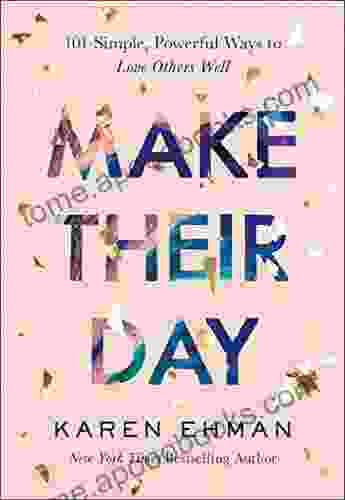
 Clayton Hayes101 Simple and Powerful Ways to Love Others Well: A Journey of Transformation
Clayton Hayes101 Simple and Powerful Ways to Love Others Well: A Journey of Transformation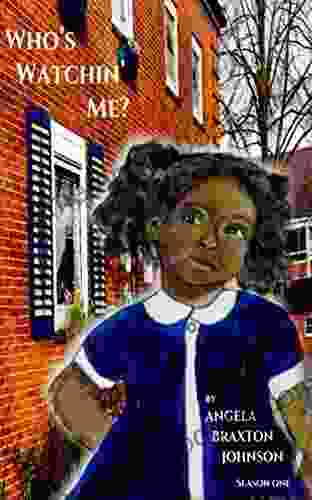
 Hamilton BellCapture the Moment: Immerse Yourself in the Thrilling World of "Who Watchin...
Hamilton BellCapture the Moment: Immerse Yourself in the Thrilling World of "Who Watchin... Gabriel BlairFollow ·13.5k
Gabriel BlairFollow ·13.5k Keith CoxFollow ·16.7k
Keith CoxFollow ·16.7k Jake CarterFollow ·8.1k
Jake CarterFollow ·8.1k Bob CooperFollow ·9.7k
Bob CooperFollow ·9.7k Brent FosterFollow ·7.7k
Brent FosterFollow ·7.7k Albert CamusFollow ·5.3k
Albert CamusFollow ·5.3k Gabriel MistralFollow ·3.3k
Gabriel MistralFollow ·3.3k Oscar WildeFollow ·2.4k
Oscar WildeFollow ·2.4k
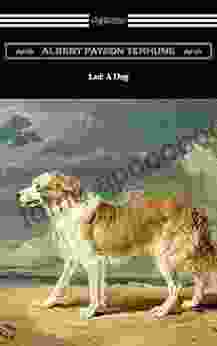
 Gabriel Garcia Marquez
Gabriel Garcia MarquezLad Dog Baby Professor: The Perfect Book for Your Child
Lad Dog Baby...
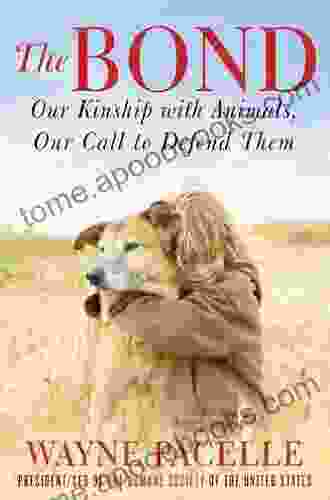
 Fredrick Cox
Fredrick CoxAn Excerpt With Fifty Ways To Help Animals Promo Books:...
: Embracing Animal...

 Kelly Blair
Kelly Blair5th Grade US History: Famous US Authors: Fifth Grade...
Step into a captivating world of historical...
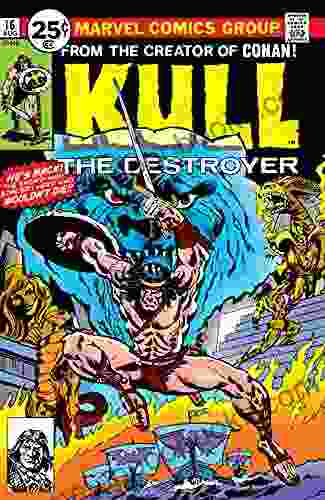
 Natsume Sōseki
Natsume SōsekiKull the Destroyer: A Timeless Tale of Sword and Sorcery
The Creation of a...

 Jim Cox
Jim CoxDas Ist Supertoll: Unlocking the Magic of German for Kids
Immersive Learning with...
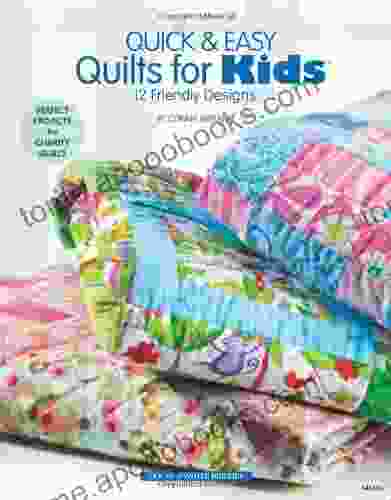
 Bruce Snyder
Bruce SnyderUnlock the World of Quilting for Kids: Discover "Quick...
Are you ready to embark on a delightful...
4.1 out of 5
| Language | : | English |
| File size | : | 1277 KB |
| Text-to-Speech | : | Enabled |
| Screen Reader | : | Supported |
| Enhanced typesetting | : | Enabled |
| Print length | : | 39 pages |
| Lending | : | Enabled |


